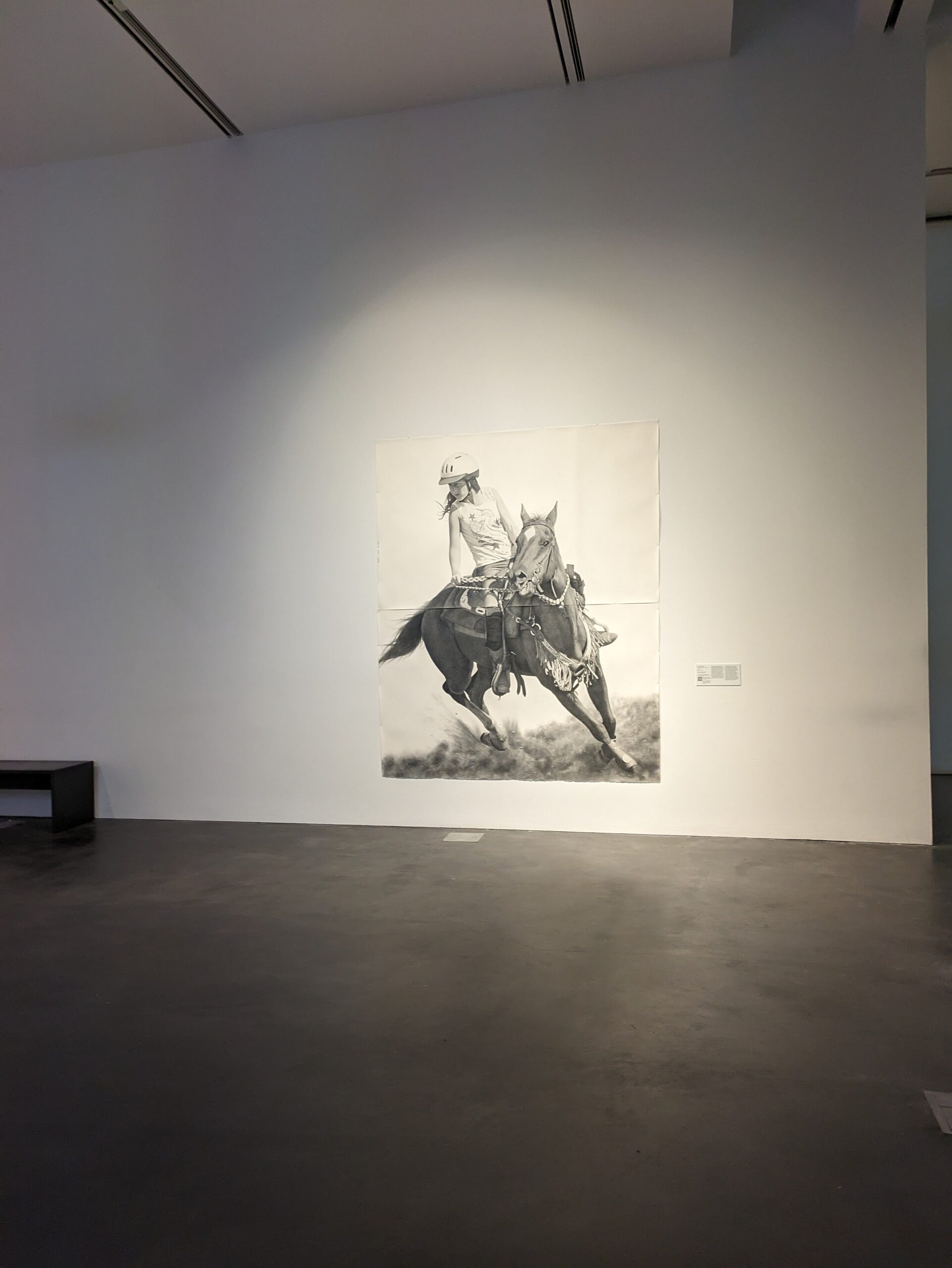A couple of weeks ago I took myself to the Museum of Contemporary Art Denver to see their Cowboy exhibit. I had a fantastic time. Museums may have a complicated, at times thorny, history, but they continue to be spaces that I enjoy.
I was floored by these large pencil and paper works by Karl Haendel. They were my favorite in an exhibit that had many highlights. I was captivated. So much so that I made sure to bring my daughter, who is roughly the same age as the subjects, in to see them.

I wanted her to see young women like her as the focus of great art. I wanted her to know that she and her peers could be the subject of big, impressive museum pieces. Young women deserve to be admired, lauded. Young women doing what they love is worth celebrating and exploring. Worth taking seriously. These are dynamic, detailed, gorgeous pieces. They portray young women and their steeds doing dynamic, dramatic, technical work.
How many times have you been to a museum and the person on the horse was a young woman? How many times are young women depicted at all in fine art? When they are present what are we celebrating? Their beauty? Their femineity? Their gentleness? The tradition of art history is worth studying, but more and more I realize that the negative space has to be assessed. Who isn’t here? Who didn’t get to participate in this tradition of self expression? Who was forgotten? Who was excluded? And why?
One of my favorite quotes to slide into the congratulatory cards for all the graduates who are celebrating this time of year is from President Obama’s Barnard College address in 2012. “Don’t just get involved. Fight for your seat at the table. Better yet, fight for a seat at the head of the table.”
I’m going to explore this quote with a different metaphor. Don’t settle for a small sliver of space on a crowded gallery wall. Your experience. Your skill. Your tenacity. Your strength. Your joy. Your determination can take up an entire gallery. It should take up an entire gallery. What you have to offer is that important because you are that important.
My books thus far have all been New Adult (NA), and this past weekend someone asked me what that meant. I explained that my books feature protagonists that are in their early twenties and that they explore themes that are specific to this stage of life. I also explained that New Adult is often considered not an acceptable audience to traditional publishers, which is perhaps why they were unfamiliar with the term. Trad publishers ask authors to age protagonists up to adult or down to Young Adult (YA).
I didn’t want to do either of these things for my books. My New Adult era was filled with major life decisions and major struggles. And during my early twenties, I would have found a whole lot of comfort in seeing my identity represented in literature. I would have loved to have seen a young twenty-something being an active hero. Using her wit, her expertise, her compassion, her strength, her determination, her passion to end a war, right a country, save the day, rescue the prince, reconcile her past and her grief and embrace her happiness. I wrote the books I wanted to read.
Representation matters. It matters for all of us. When we see our identities included in industries, conversations, politics, are and literature, barriers start to break down. I’m not naive enough to believe that this is enough to counteract systemic sexism, racism, and biases in our society, but I do believe that it makes a difference. Do you agree? Was there ever a time that representation mattered to you?


